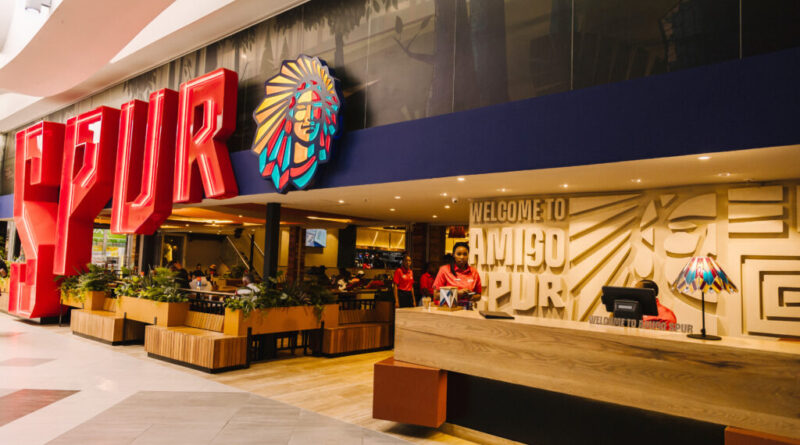Spur vs. Famous Brands: A Clash of Two Restaurant Titans
https://iframe.iono.fm/e/1589500?layout=modern" width="100%" height="170" frameborder="0
You can also listen to this podcast on iono.fm here.
SIMON BROWN: I’m speaking with Keith McLachlan from Element Investment Managers this morning. Thank you for joining me early today. Let’s discuss Spur’s results – they are impressive. They are experiencing revenue growth, although I noticed a slight stagnation in foot traffic. However, they are increasing spend per customer and opening numerous new stores across their various brands. In what is undoubtedly a challenging operating environment, Spur is clearly excelling.
Read: Spur announces a 40% increase in dividend.
KEITH McLACHLAN: Good morning, Simon. Absolutely. You might have overlooked a significant highlight – they have raised their dividend substantially. The dividend has increased by 40%, and they are not even distributing all their earnings. Their payout ratio stands at about R3 per share, while they earned around R3.40.
In short, these are solid numbers. They are supported by strong cash flow. Spur is focused on its core strategy and consistently expanding its store network, with approximately 60% of their earnings generated from the Spur brand.
Some of their other brands are performing well, while others are not as successful. However, this is typical in the QSR (Quick Service Restaurant) casual dining sector, where success can be hit-or-miss.
I believe Spur is thriving, with the new management team injecting energy and vision for the next decade or two.
SIMON BROWN: You raise an excellent point. In the QSR and casual dining sectors, experimentation is crucial, and there are no guarantees of success. It’s important to proceed cautiously, as some ventures may turn into significant successes while others may quietly decline.
KEITH McLACHLAN: Absolutely. If you compare them to their direct competitor, Famous Brands, which has nearly double their market cap and includes brands like Steers, Debonairs, and Wimpy, you’ll notice that Famous Brands has a much more diversified portfolio. However, they’re performing relatively worse.
Diversification doesn’t always equate to success, and while Spur maintains a more focused portfolio, its core brand is excelling, particularly in the family casual dining segment. They have a strong presence during breakfast, lunch, and dinner, which is vital for their success.
SIMON BROWN: I want to circle back to Famous Brands shortly. One last question on Spur: despite a 7%-plus gain yesterday, it doesn’t seem overpriced. Its PE ratio is around 11, and it boasts a dividend yield of nearly 9%, along with a robust balance sheet. Even after such a significant increase, it remains affordable.
KEITH McLACHLAN: No, not at all. Historically, companies like these tend to trade at higher multiples because building a successful franchise network of substantial scale is quite challenging. Once achieved, you can expect excellent returns on capital.
Spur offers a 30% return on equity, generates cash that is well-supported, and their substantial dividend payouts, despite ongoing growth, are due to their net-cash balance sheet. They aren’t heavily indebted.
Listen: How QSR giant KFC secures sites in SA.
Therefore, Spur is definitely not an expensive stock and offers similar value to Famous Brands at this point in the cycle. However, Famous Brands is in quite a different situation with its own set of brands and a balance sheet that carries debt, making Spur appear relatively inexpensive, even after recent movements.
SIMON BROWN: Famous Brands used to be a stock to watch about a decade or even 15 years ago, back around 2010—an excellent choice for us to discuss regularly. I held it, and I believe you did too. It was undoubtedly the stronger contender at that time, and now things have evolved. This serves as a reminder for investors to closely monitor even the so-called ‘strong’ stocks—though we might debate the current view on Famous Brands.
Famous Brands encountered difficulties in the UK. They’ve faced significant challenges, and now Spur has taken the lead, which necessitates a tough adaptation for investors.
KEITH McLACHLAN: Indeed. Reflecting on the S&P 500 over the last century, only about five of the original stocks remain, showcasing a mere 1% survival rate over 100 years. Not all businesses should be viewed as long-term holds, regardless of popular investor sayings. Famous Brands is a case in point.
A decade ago, they made the ill-fated acquisition of Gourmet Burger Kitchen in the UK, marking a peak for Famous Brands. This decision led to significant debt, and they had to reverse it while still managing their outstanding debts. This situation has hindered their ability to invest in their South African network.
Conversely, Spur has operated conservatively with a net-cash balance sheet and a focus on returns. Famous Brands, on the other hand, was leveraged with debts and faced higher operational risks. This approach may appear advantageous in a flourishing market but can lead to severe setbacks in a downturn, and Famous Brands has certainly experienced that. I believe they are now starting to recover.
Amid all of this, a new management team at Spur is paving the way for its future, outshining Famous Brands, despite being smaller.
SIMON BROWN: You make an excellent observation. While leverage can be beneficial, it can also backfire. When the market is flourishing, it’s advantageous, but during downturns, it can be disastrous. It was in 2016 that Famous Brands reached almost R150, and now it’s down to R58.
Thank you, Keith McLachlan from Element Investment Managers, for your early-morning insights.
Listen to the complete MoneywebNOW podcast every weekday morning here.

